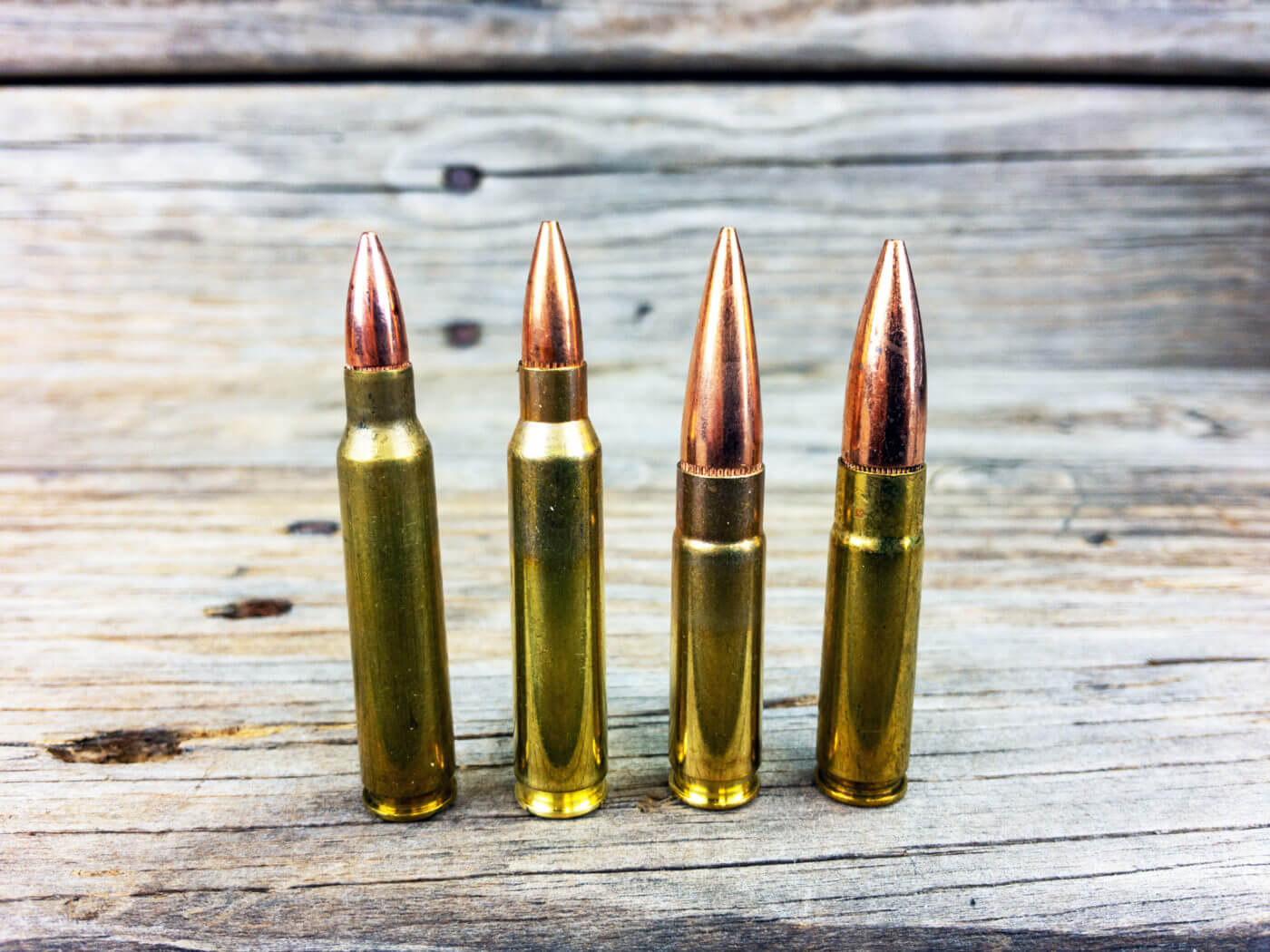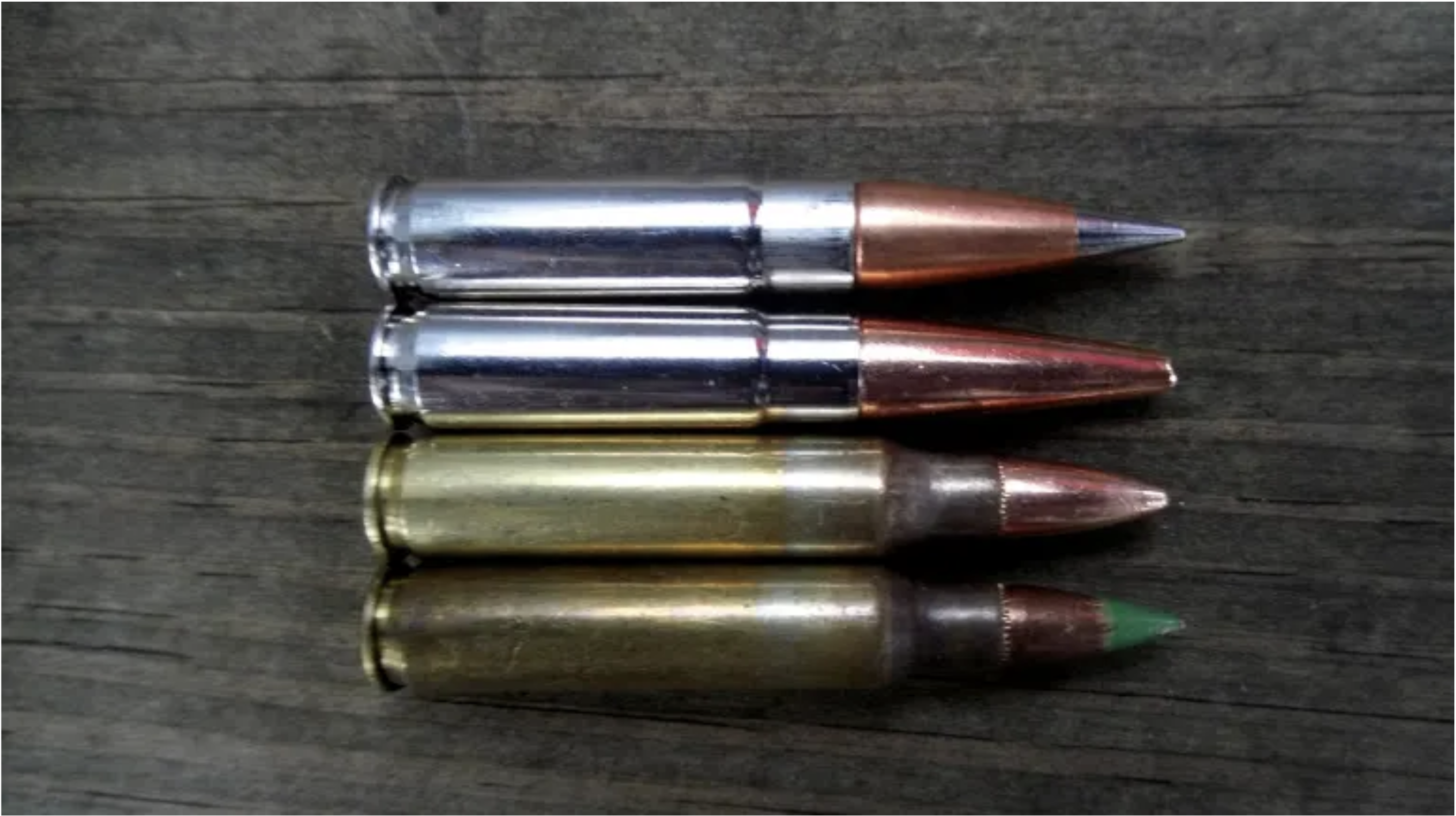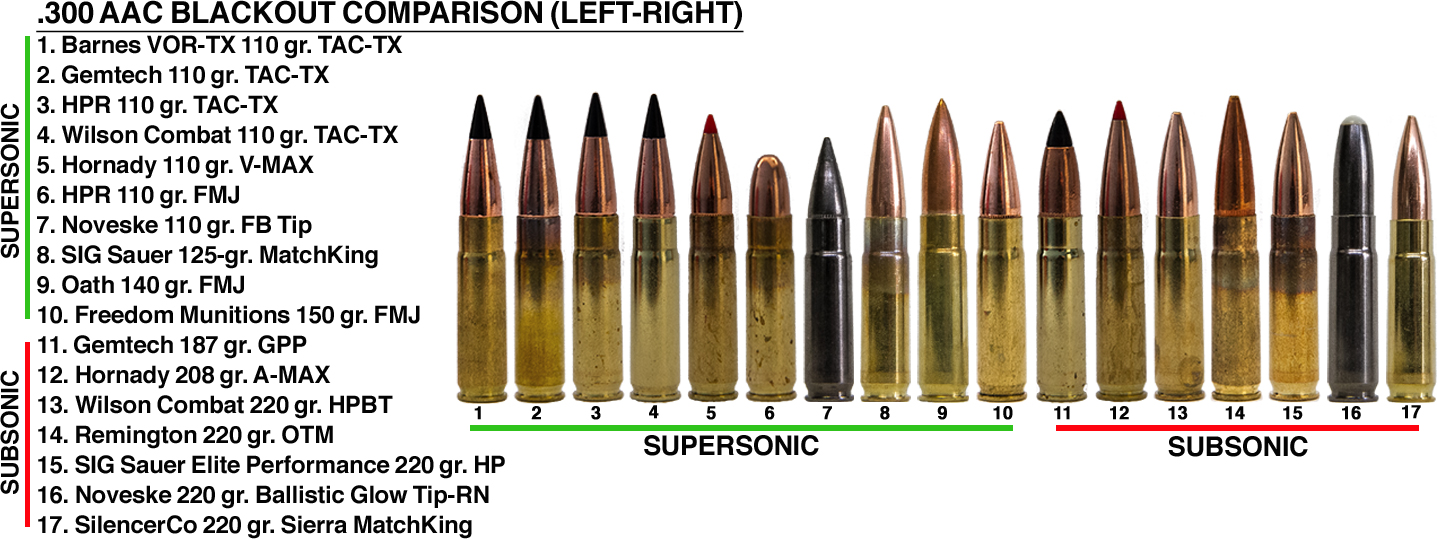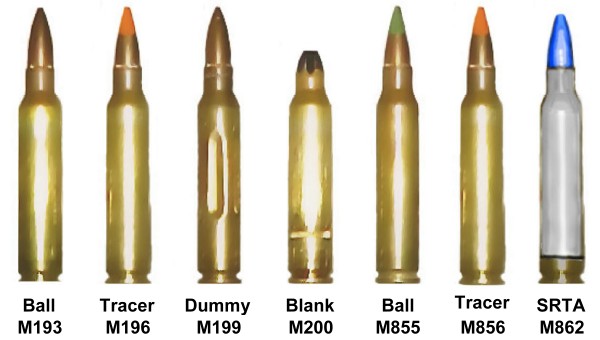.300 Blackout vs 5.56mm NATO
If you spend any time shopping for ammunition online, chances are high you have stumbled across the whole .300 Blackout vs. 5.56x45mm debate that firearms enthusiasts are so fond of. Like you or me, like your AR-15, like the folks posting on firearms forums, the cartridges available today are varied. You have your classics, like 5.56 NATO. But then, if you dig a little deeper, you have the .300 BLK, which is growing in popularity.
That begs the question: Which is better, the .300 BLK or 5.56?
Breaking Down .300 BLK vs. 5.56mm NATO
 The longer, thinner 5.56 on the left, with .300 blk on the right. You can see how the .300 blk uses a necked fown 5.56mm case.
The longer, thinner 5.56 on the left, with .300 blk on the right. You can see how the .300 blk uses a necked fown 5.56mm case.
It wouldn’t be a good comparison piece unless we broke down everything to do with both the .300 BLK and 5.56 NATO rounds step-by-step.
- Cost — On average, 5.56 is significantly cheaper than .300 BLK. You’ll find most variations of the 5.56 round for between $.27 and $1.50 per round (depending on quality). The .300 BLK round, on the other hand, goes for nearly double that price.
- Recoil — The .300 BLK features recoil three times greater than the 5.56mm round, at 9 pounds. However, felt recoil is only slightly more, and has no impact on actual shooting.
- Range — The 5.56mm round features a variable range of about 500 yards, on average, compared to the 300 yards of the .300 BLK round.
- Weight — .300 BLK features 110- to 220-grain bullets, whereas the 5.56mm is filled with 40- to 77-grain bullets. Therefore, the latter is notably lighter. Will you notice the difference? No, probably not.
- Availability — It’s easy to find 5.56mm rounds at your local gun store or from online shops. The .300 BLK is quickly gaining popularity, but we've been to some back woods shops that still don't carry it.
A Round for Every Scenario
Like most other rounds on the market today, both 5.56 and .300 BLK have specific purposes and scenarios where they excel. Let us explore a few and determine which round is best suited to what purpose in the field.
- Casual Range Shooting — Yeah, sure, it’s a ton of fun to spend the weekend at your local range with a custom-built 80% AR-15. We feel you there, for sure. But think of the price of firing a .300 BLK round compared to a 5.56mm round. That weekend romp doubled in price quickly. For casual shooting, we recommend the 5.56mm round any day of the week. Though, there's nothing like running some suppressed subsonic .300blk.
- Hunting — A lot of firearm enthusiasts also hunt. The two go hand-in-hand, after all. For a hunting spree out in the woods, .300 BLK is honestly the preferred choice. Better suppressed options give you the freedom to not worry about ear protection, and the .300 blackout will take down heavier game than the 5.56mm will. However, if you're varmint hunting at a distance, the 5.56 will definitely take the cake there.
- Home Defense — Many firearm owners are also enthusiastic about home defense. If you have a personal weapon close by, like a short-barreled AR-15, then you need the right round to safely and effectively protect what is yours. The .300 BLK round is ideal for a short barrel and a suppressor, both ideal in CQB scenarios. Unfortunately, the .300 BLK penetrates walls with ease. A single round may wind up a few rooms over. It would be best to weigh the pros and cons for yourself before selecting a home defense round.
What is Your Rifle For?

When it comes down to it, both rounds are great for their intended purpose, but, they are intended for different things. You wouldn't take a Ford Raptor to a street race, but it's sure a great vehicle to have when you need to go off road. Just like you wouldn't take your Corvette to your next hunting trip. They're both vehicles that are top-of-their-class, they're just in different classes.
Where .300 BLK Excels

Suppressed Uses
No doubt, when you're trying to be quiet, .300blk is king. Subsonic rounds eliminate supersonic cracks, and lower gas pressures help silencers/suppressors be more effective. A well suppressed .300 blackout rifle can be compared to an MP5-SD in terms of dB levels. In other words, it's very very quiet.
Practical uses?
Hunting without EarPro, Home Defense without Earpro, and making a firearm a bit less scary for a new shooter. Also, quietly taking out Terry the Taliban as you infiltrate a terrorist training camp so you don't wake all the neighbors. But if you're reading this article, I doubt you're doing that.
Short Barrels
Before I get twenty comments yelling at me to Google the MK18, or AR15 pistols, let me preface by saying that I have plenty of short barrel 5.56 guns. However, the .300blk was designed specifically with short barrels in mind, and there is no doubt that it excels there. Posder loads are completely burned by 8.3" of barrel length, and a .300blk has more muzzle energy out of a 9" barrel than a 5.56 has from 16".
Practical Uses?
Home defense, Truck Guns, and anywhere else you need something compact. SHort barrels are all the rage these days now that pistol brace's are just as effective as stocks, and most people reside in urban environments. Do I want to be carrying an 18" SPR trying to fight my way out of a city? Absolutely not. You try running vehicle drills with a rifle that's four feet long.
Looking Cool
We know that's why you're here. Showing up to the range with a short-barrel and suppressed .300 blk is definitely going to make you the coolest out of your friends.... until they see you shoot.
Where 5.56mm Excels

Training & Practicality
5.56 is still the most common AR15 round out there by a mile, which means more options, and cheaper prices. Not just for ammo either. You'll have more options for barrels, optics with specific bullet drop compensation, etc. However, most importantly, in an emergency situation, you'll be able to get ammo from anywhere, and anyone. Also, with cheaper and more available ammo, you'll be able to train more. And training is more important than any gear you can have.
Practical Uses?
Uhhh... See above.
Precision Shooting
5.56 is an inherently accurate round, wheras .300 blk is not. Now, let's be clear what I mean here. You'll never have trouble hitting a man-sized target out to a few hundred yards with the Blackout. But if you're looking to print tiny groups, or hit small targets at distance, 5.56 is the tool for the jib
Practical Uses?
Competition shooting, varmint hunting, anything where distance and precision is going to be a priority. Prairie Dog & Varmint hunters, looking at you.
So what do I choose?
Listen, there's no right answer. It's going to depend on what you're doing. For home defense, there isn't going to be a real difference unless you're running a suppressor. The REAL answer is always, why not both?
80% Arms offers a wide variety of AR15 lowers that support both 5.56 & .300 blk, and a selection of gun build kits if you want to make your build easy. Whatever you choose, it ships right to your door, and is always backed by our Lifetime Warranty.






 Back to List
Back to List